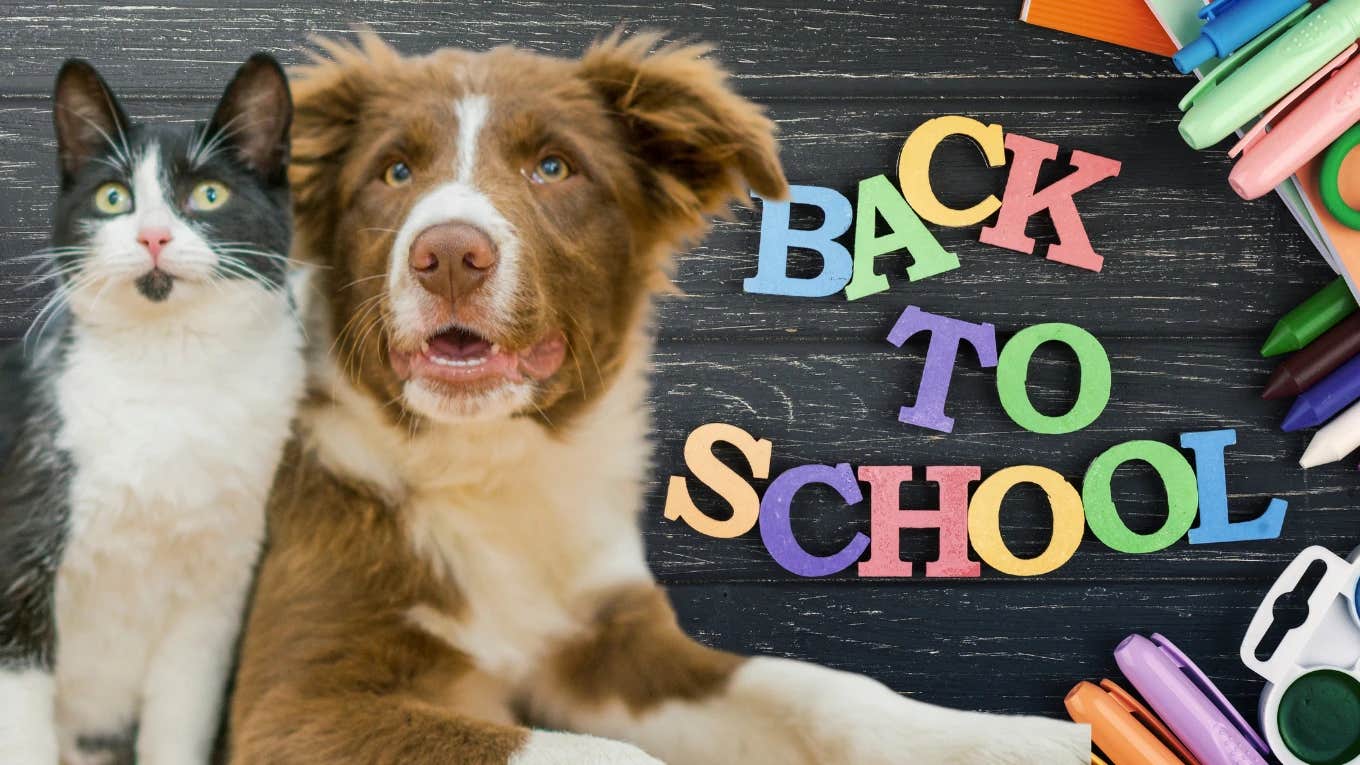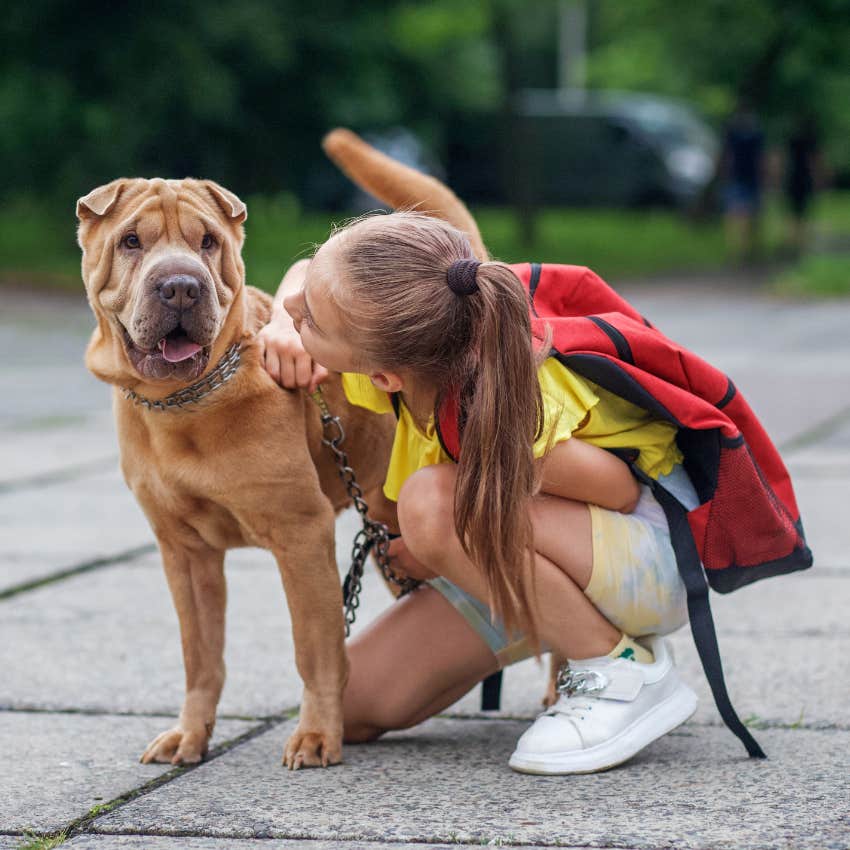Doctor Shares 4 Signs Your Dog Or Cat Has 'The Back-To-School Blues' & How You Can Help Them Adapt
Back-to-school time isn't just stressful for kids and parents — it's freaking out Fido too!
 Carisa Chirita's Images | FatCamera | Getty Images Signature | Canva Pro
Carisa Chirita's Images | FatCamera | Getty Images Signature | Canva Pro Back-to-school time can be incredibly stressful for everyone involved. The change in routine from the relative relaxation of summer vacation to the early mornings and hustle and bustle of the new school year throws everything off equilibrium for a week or two.
But while the impacts on kids and parents are obvious, it's easy to forget about the other members of our households: our cats and dogs. They hate back-to-school time too! And there are some important things to watch out for to help your pet cope.
A doctor shared 4 signs back-to-school time is stressing out your dog or cat.
Dogs and cats are creatures of habit, and, much like kids, their tight daily routines are deeply important to them — as you've surely noticed if you've ever been so much as 15 minutes late filling their food bowl.
And just like you and your kids, back-to-school time throws everything out of whack for your pets, even if just because they're sensing the stress you're feeling about the changes the fall brings.
 OlhaTsiplyar | Shutterstock
OlhaTsiplyar | Shutterstock
Dr. Jamie Winn, a veterinary pharmacist at Universal Drugstore, an online pet pharmacy, says that this can cause the "back-to-school blues" because kids heading back to school, students leaving for college, and adults returning to more normal work schedules present "sudden and significant changes in their environment."
"This period can lead to feelings of separation anxiety and isolation in pets, particularly if they’ve become accustomed to having more company during the summer," he said, and disruption to the normal flow of things can result in stress and anxiety.
Here are four signs to watch out for in your dog and cat that indicate they might have the "back to school blues," and how you can help them readjust.
1. Excessive barking or meowing
We all know that barking and meowing are dogs' and cats' ways of communicating with us, and when they do too much of it, it can get real annoying, real fast. But vets say this can be a way for pets to communicate pain — not just physical, but emotional.
If your pupper or kitty is suddenly way more vocal than normal, take it as a sign that they're stressed, especially if it's happening during a time of change.
2. Destructive behavior
Cats and dogs don't have the coping skills we have — if only cat and dog support groups were a real thing! So when they're feeling stressed, overwhelmed, or perhaps a bit angry at you for messing up their routine, they'll sometimes act out.
Chewing on furniture, scratching doors or other household objects, and even using the bathroom where they're not supposed to are sometimes a pet's way of processing their stress over the changes in their environment.
 RJ22 | Shutterstock
RJ22 | Shutterstock
3. Changes in eating habits
When humans are going through something, they often fall into two camps: those who stop eating and those who eat everything in sight. Our pets are no different.
If you notice that your usually voracious dog or cat is suddenly not that into their food bowl or that your typically dainty pet is suddenly eating like a horse, it might be because they're feeling unsettled lately.
4. Less energy and interest in playtime or walks
A typical symptom of human depression is a loss of interest in the things we love. Here again, dogs and cats are no different.
If you notice that your pet is suddenly not quite as keen on playing fetch or going for their daily strolls, it could be an indicator that they're struggling with what's happening around them.
 p.s.stasya | Shutterstock
p.s.stasya | Shutterstock
How can you help your cat or dog cope with 'back to school blues'?
Dr. Winn has two primary recommendations, and, you guessed it, they're all about keeping your dog or cat's routines as sacrosanct as possible.
1. Keep your pets on schedule for feeding, walking, and playtime as much as possible.
Dr. Winn says that keeping your pet's structure as normal as possible while you and your family's lives are changing can go a long way. This means not disrupting their feeding, walking, and playtime schedules as much as possible amid all the back-to-school changes.
“Pets feel more secure when they know what to expect," Dr. Winn said, and keeping these schedules as standard as possible "can help your pet feel more grounded despite the changes in the household."
2. Give them a comforting space to retreat from stress.
When you and your family are gone from home, Dr. Winn says creating a spot for your dog and cat to retreat can go a long way.
This could mean a crate, a room, or just an area of your house that is all theirs and filled with their favorite toys, blankets, or other comfort items. Something that smells like you can also be hugely comforting to a stressed pet.
 Alena Ozerova | Shutterstock
Alena Ozerova | Shutterstock
If they're the type to become anxiously energetic, you can also include toys like puzzle feeders or treat dispensers to keep them mentally stimulated until you get home.
Change is an unavoidable part of life, of course, especially when kids are in the mix. Just be sure not to forget the furry members of your family are feeling the stress too. If nothing else, it's an excuse for extra snuggles!
John Sundholm is a news and entertainment writer who covers pop culture, social justice, and human interest topics.
